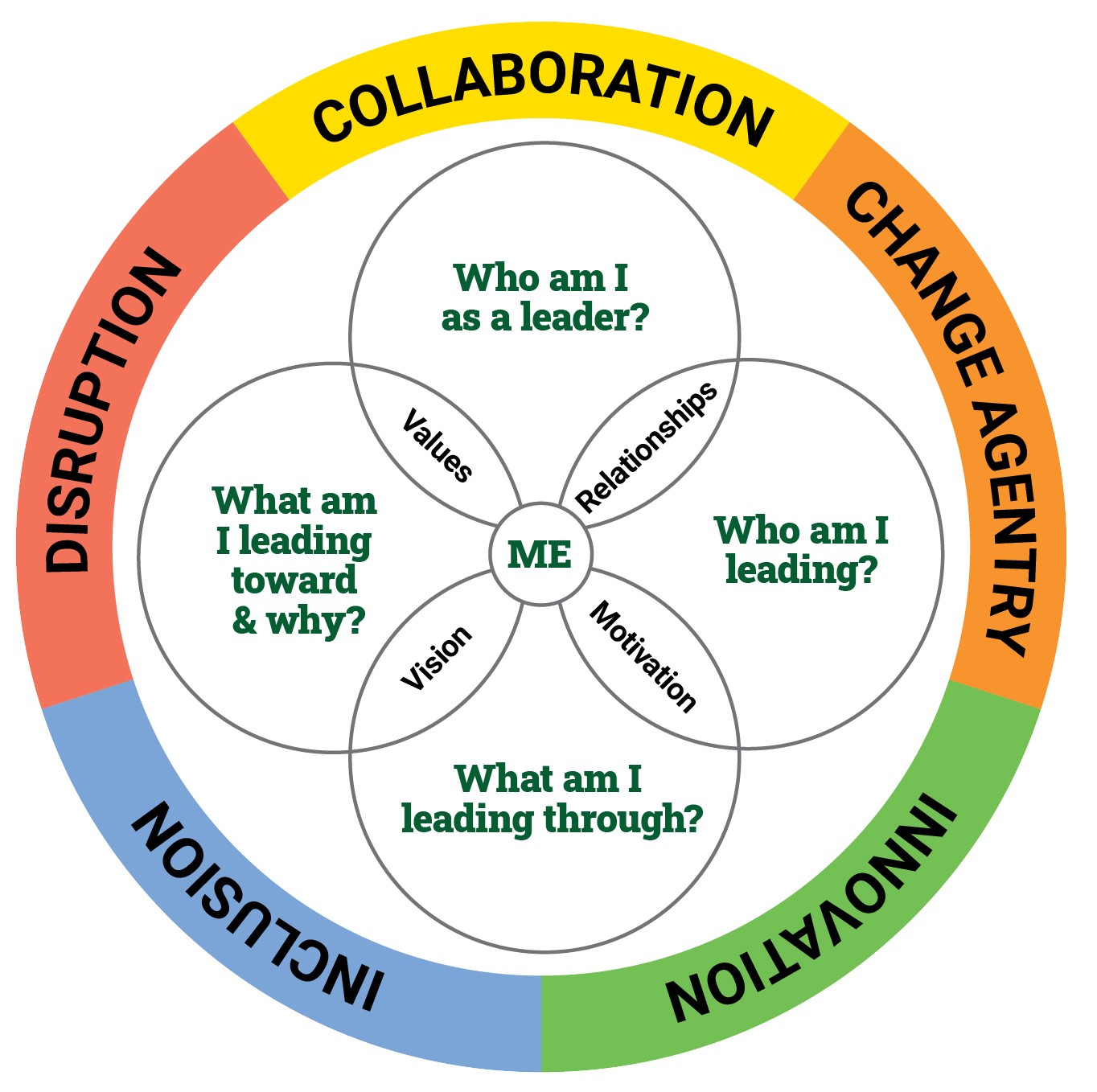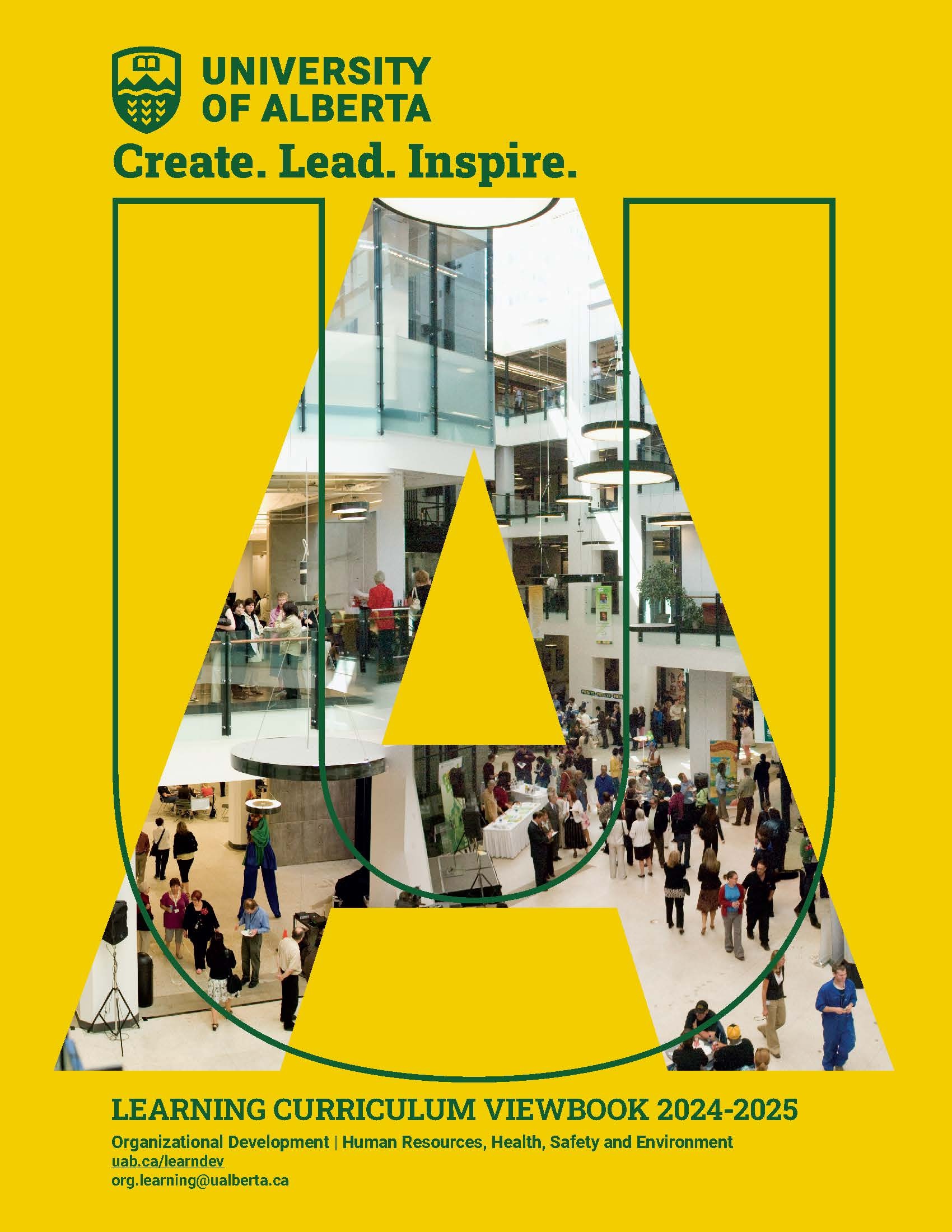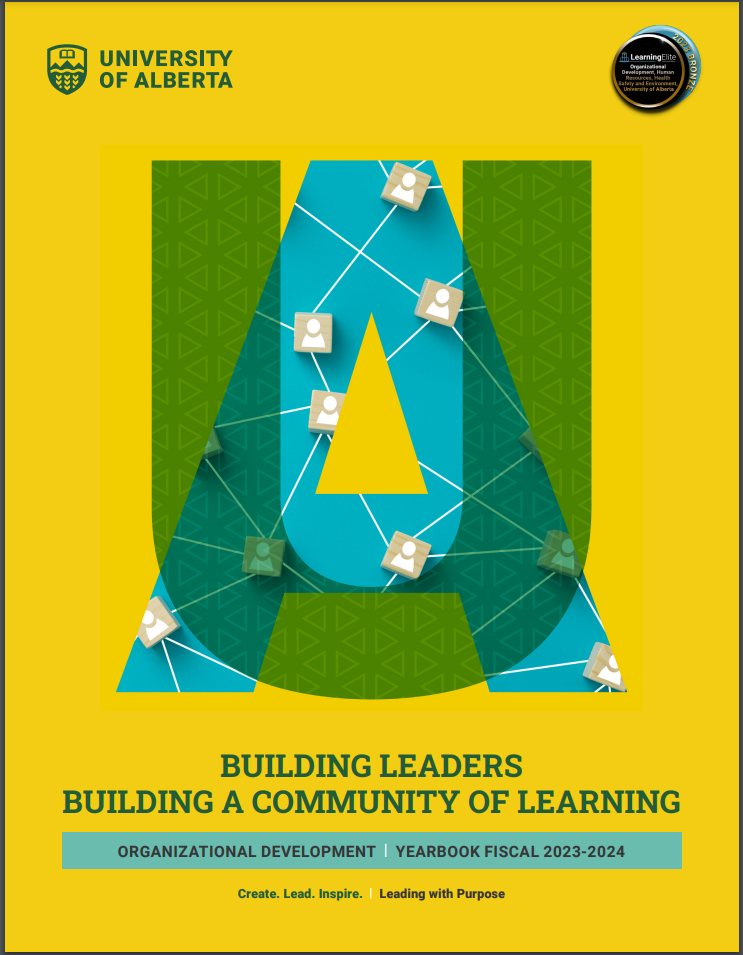Leadership

At the University of Alberta, we lead with purpose. We are relentless in our quest to build a better future by realizing the potential of people and ideas.
Our leadership programs help employees from across the University become radically intentional about how they:
- Relate to themselves and others, and build enduring relationships of trust
- Understand their context and its impact on the people they serve and work with
- Imagine and realize future possibilities
- Honor personal and institutional values
Our programs also build capacity in:
- Collaboration
- Change-agentry
- Innovation
- Disruption
- Inclusion
Leadership Framework
Our programming is driven by our leadership framework, which takes a holistic approach to leadership development and focuses on:
- Using reflective tools to continuously evaluate their leadership tendencies, strengths and areas of growth
- Employing strategies that build relationships of trust and support collaboration with their direct reports
- Articulating the vision and values that drive their leadership
- Hosting inquiry-based conversations to better understand, motivate, and secure accountability from their team
- Envisioning how they could lead change in their unit, drawing on key components of effective change leadership
- Identifying opportunities to decolonize and improve equity and inclusion in their team
- Outlining a human-centered design approach to innovation and explain how they can support innovation in their units
- Initiating advocacy-based conversations to unpack and disrupt the status quo
A Venn diagram with four intersecting circles. Around the diagram is a group of behaviours:
The four main circles read:
- Who am I as a leader?
- Who am I leading?
- What am I leading through?
- What am I leading toward and why?
Intersecting "Who am I as a leader?" and "Who am I leading?" is "Relationships."
Intersecting "Who am I leading" and "What am I leading through?" is "Motivation."
Intersecting "What am I leading through?" and "What am I leading toward and why?" is "Vision."
Intersecting "What am I leading toward and why?" and "Who am I as a leader?" is "Values."
Surrounding the Venn diagram are the behaviours:
- Collaboration
- Change Agency
- Risk Taking
- Inclusion
- Disruption
Why these areas? Find out more about our program framework in leadership in a time of change and complexity.
Leadership at all levels
As organizations seek to reimagine the future, do more with less and retain talent, leadership isn’t about a role or position or something you’re given. Leadership is a choice. It’s a verb, not a noun. We can choose to lead from any position. We can also choose not to lead despite having a position of great authority. Leadership development, therefore, needs to extend to employees at all levels.
Whether you are an individual contributor, a senior executive or somewhere in between, if you are committed to engaging others in the exploration and treading of better paths, we have leadership training for you!

Leading With Influence
Focus: Leading colleagues, others and leading “upwards”
Designed for: everyone*

Leading Others
Focus: Leading a team
Designed for: supervisors, team leads, entry-level and mid-level managers
* If the program is oversubscribed, preference will be given to applicants who do not qualify for our other leadership programs.
Programs are streamed according to an employee’s level of authority to ensure that the applied components are relevant to participants’ day-to-day realities and homework can be carried out in a meaningful way.
Leadership + management: What’s the difference?
Put succinctly, good management produces “order and consistency,” and good leadership produces “change and movement” (Northouse, 2022, p.12). Both are important, but the mindset and skill set behind management and leadership are different, which is why we train in these areas differently.
| Management | Leadership |
|---|---|
|
|
Explore our management training.
SOURCE: Northouse, P.G. (2022). Leadership: Theory and practice (8th ed). Sage Publications, Inc.


